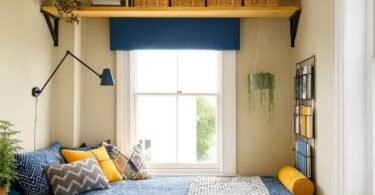Getting Started with Your Flower Garden Journey
I’ll be honest with you. When I first thought about creating a flower garden, I pictured myself as some sort of botanical wizard, waving my trowel and magically producing Instagram-worthy blooms. Reality hit pretty hard when my first attempt looked more like a plant graveyard than a garden paradise. But here’s what I learned through years of trial, error, and surprisingly few tears: you don’t need acres of land or a master’s degree in horticulture to create something beautiful.
The beauty of flower gardening lies in its flexibility. You can start small, really small. I’ve seen people transform tiny balconies into floral wonderlands using nothing but containers and creativity. Your flower garden doesn’t have to follow some rigid blueprint from a fancy landscaping magazine. It can snake along your front porch, climb up a trellis beside your kitchen window, or fill that awkward strip of land between your driveway and fence.
Think about it this way: flowers want to grow. They’re not sitting there plotting against you, waiting for you to make a mistake. They’re actually pretty forgiving once you understand their basic needs. I remember my neighbor Mrs. Chen, who created the most stunning display using nothing but old rain boots as planters along her walkway. The marigolds didn’t care that they weren’t in designer pots. They just bloomed their hearts out, bringing joy to everyone who walked by.
What makes flower gardening truly rewarding is that you can start wherever you are, with whatever space you have. Got a sunny windowsill? Perfect spot for some herbs that’ll flower beautifully. Have a shady corner that seems hopeless? Impatiens and begonias are about to become your new best friends. The key is working with what you’ve got instead of waiting for perfect conditions that might never come.
I’ve learned that the most successful gardeners aren’t the ones with the biggest budgets or the most experience. They’re the ones who pay attention, adapt when things don’t go as planned, and aren’t afraid to get their hands dirty. Your flower garden will teach you patience, reward your efforts, and surprise you in ways you never expected. Trust me, there’s nothing quite like stepping outside your door and being greeted by colors and fragrances you helped bring to life.
Mastering the Art of Flower Garden Design
Let me tell you about the time I tried to cram every flower I loved into a space the size of a parking spot. The result? Pure chaos. Tall sunflowers blocking everything behind them, tiny alyssum completely invisible behind bold zinnias, and a color scheme that looked like a rainbow had a fight with a paint store. That garden taught me more about design principles than any book ever could.
The word “garden” comes from “garth,” meaning an enclosed place, but I like to think of it as a outdoor room where plants are your furniture. Just like you wouldn’t put all your furniture against one wall, you want to think about how your flowers will work together in the space. Proportion matters more than you might think. If you’re working with a rectangular area, aim for a length that’s about two and a half times the width. This ratio just feels right to our eyes, like the golden ratio but for gardens.
Your focal point deserves some serious thought. I learned this the hard way when I planted a gorgeous climbing rose at the front of my garden bed. Beautiful? Absolutely. Smart design? Not so much. The eye should travel through your garden, not stop dead at the first pretty thing it sees. Put your showstopper at the far end, and let everything else guide visitors on a visual journey toward that destination. Think of it as storytelling with plants.
Balance doesn’t mean everything has to match perfectly. I used to think I needed symmetrical plantings on both sides, like some formal estate garden. What a relief when I discovered that visual balance is more about distributing visual weight than creating mirror images. A large, bold plant on one side can be balanced by several smaller ones on the other. It’s like arranging a room where a big sofa might be balanced by two smaller chairs and a side table.
Here’s something nobody tells you about garden design: the shape of your space isn’t a limitation, it’s an opportunity. Square spaces can become circular gardens that draw the eye inward, creating intimacy and focus. Rectangular areas let you create layers and depth, like a living painting with foreground, middle ground, and background. Even oddly shaped spaces have potential once you stop fighting their natural character and start working with it instead.
The biggest mistake I see new gardeners make is thinking their design has to be permanent. Gardens are living, growing things. That perfect plan you make in winter might need adjustments by summer. Plants grow, spread, and sometimes surprise you by thriving in unexpected ways. I’ve learned to think of my garden design as a rough sketch rather than a final blueprint. The plants and I collaborate on the finished masterpiece, and honestly, they often have better ideas than I do.

Creating Stunning Color Combinations That Actually Work
Color in the garden used to intimidate me something fierce. I’d stand in the nursery, overwhelmed by choices, wondering if my pink and orange combination would look like a sunset or a traffic accident. After years of experimenting (and yes, creating a few visual disasters), I’ve learned that working with color in the garden is more forgiving than you might think, and way more fun than following strict rules.
Let’s start with the basics, but not in a boring textbook way. Warm colors are like that friend who walks into a room and immediately becomes the center of attention. Reds, oranges, and yellows demand to be noticed. They advance toward you, making spaces feel cozier but also more energetic. Cool colors are the calm, collected types. Blues, purples, and greens recede, creating a sense of space and tranquility. They’re the garden equivalent of taking a deep breath.
I’ve discovered that white is the great peacekeeper in any color scheme. It doesn’t just brighten everything up, it gives your eyes a place to rest between more intense colors. Think of white flowers as the pause between musical notes. They let the other colors sing instead of shouting over each other. I sprinkle white throughout every garden I design, and it never fails to pull everything together.
Here’s where it gets interesting: you don’t have to stick to one color scheme throughout your entire garden. I learned this from a master gardener who created what she called “color rooms.” Her front yard featured warm, welcoming colors in oranges and yellows. Around the corner, her side garden shifted to cool blues and purples, creating a completely different mood. Walking through her space felt like moving through different chapters of a story.
The cottage garden approach throws all the rules out the window, and I absolutely love it for that. Every color shows up to the party, and somehow it all works. The secret? Repetition and flow. When you repeat certain colors throughout the space and let them blend naturally, even the most chaotic combination starts to make sense. I’ve seen gardens that included hot pink, bright orange, deep purple, and sunshine yellow that looked absolutely magical because the gardener let the colors weave through each other instead of segregating them into blocks.
Monochromatic gardens deserve a special mention because they’re surprisingly sophisticated and much easier than you might think. I once created an all-white garden that stopped traffic. White cosmos, white nicotiana, white sweet alyssum, and silver dusty miller created layers of texture and form that were stunning in their simplicity. The garden felt serene and elegant, especially in the evening when the white flowers seemed to glow in the fading light.
Don’t forget about foliage when planning your colors. Green isn’t just background; it’s an active participant in your color scheme. Different shades of green, plus silver, burgundy, and chartreuse foliage, add depth and interest even when flowers aren’t in peak bloom. I’ve learned to think of leaves as paint colors, not just supporting cast members.
Advanced Color Schemes and Plant Combinations
After years of playing with different combinations, I’ve developed some go-to formulas that rarely fail. But first, let me share my biggest color breakthrough: the day I realized that clashing colors only clash when they’re fighting for attention at the same level. Put that hot pink next to bright orange, but vary the heights, textures, and quantities, and suddenly they’re having a conversation instead of an argument.
My blue and white garden remains one of my proudest achievements. It started as an experiment in creating a cooling effect during brutal summer heat, but it became something almost magical. Tall blue delphiniums and white cosmos formed the backdrop. Mid-level campanula and white nicotiana filled the middle space. Low-growing blue lobelia and white sweet alyssum created a soft carpet effect. Walking into this garden on a hot day felt like stepping into an air-conditioned room. The combination was so successful that neighbors started asking for cuttings and advice.
The all-pink garden taught me about the subtlety of monochromatic schemes. Pink comes in so many variations that you can create incredible depth using just one color family. Deep rose cosmos, pale pink sweet peas, magenta petunias, and soft pink impatiens created layers that were never boring. I added some silver artemisia for contrast, and the result was feminine without being fussy, bold without being overwhelming.
Now let’s talk about my personal favorite: the sunset garden. This warm scheme mimics the colors of a spectacular evening sky, transitioning from yellow through orange to deep red and purple. I plant it in a way that follows the sun’s path, with the coolest colors (purples) in the east, warming up to oranges and reds in the west, finishing with yellows. As the day progresses and the light changes, different sections of the garden seem to glow. It’s like having a living sunset that changes throughout the day.
The herb garden approach to color opened my eyes to the beauty of subtle variations. When flowers take a backseat to foliage, you start noticing incredible details. Silver sage leaves catching morning dew, the purple undersides of basil leaves, the fine texture of fennel fronds against broad oregano leaves. These gardens might not scream for attention, but they reward close observation with endless discoveries.

Creating successful plant combinations goes beyond just color matching. You need to consider bloom times, growth habits, and maintenance needs. I learned this lesson when I paired high-maintenance roses with low-maintenance wildflowers. The combination looked great in theory, but in practice, the different care requirements made maintenance a nightmare. Now I group plants with similar needs together, which makes both gardening and color planning much easier.
The key to any successful color scheme is repetition with variation. Pick three or four colors and repeat them throughout your space, but vary the flowers, textures, and heights. This creates unity without monotony. I might use yellow in tall sunflowers, medium-height rudbeckia, and low nasturtiums, creating a cohesive flow that guides the eye through the garden while keeping things interesting.
Remember that color changes with light and season. That burgundy coleus that looks dramatic in morning shade might fade to brown in harsh afternoon sun. Those white flowers that seem perfect in daylight become luminous beacons in moonlight. I’ve learned to observe my gardens at different times of day and in different seasons, making notes about how colors interact under various conditions. This observation has taught me more about successful color combinations than any design book ever could.







Leave a Comment